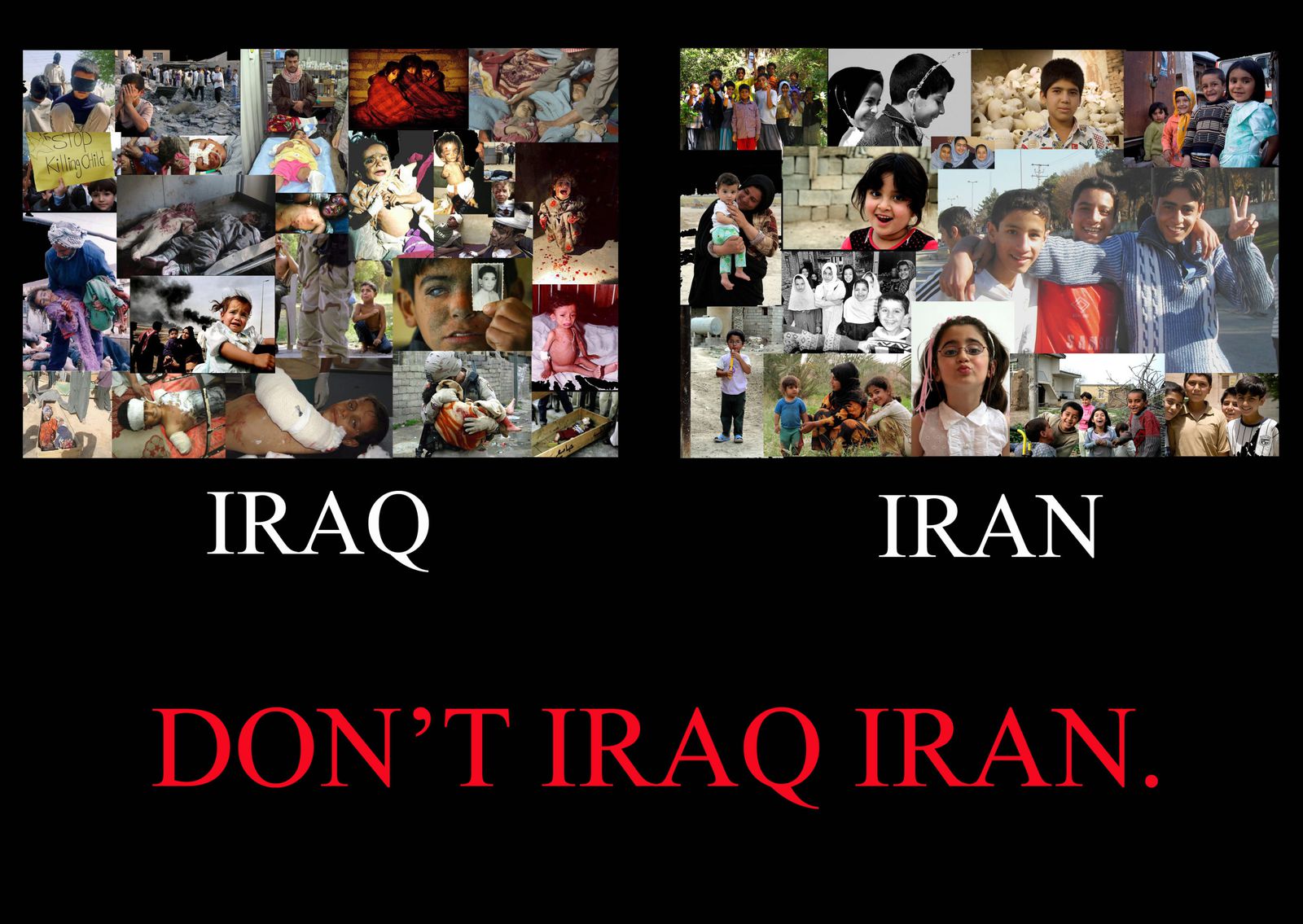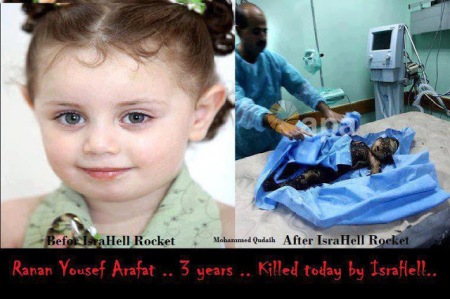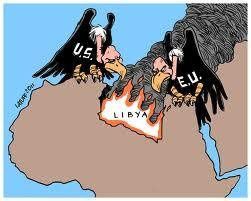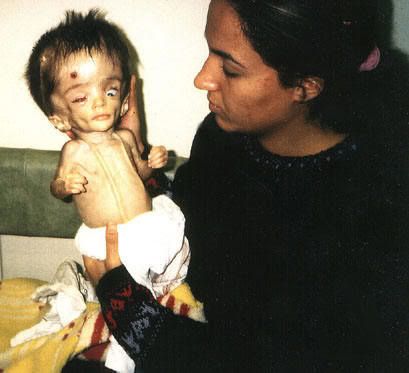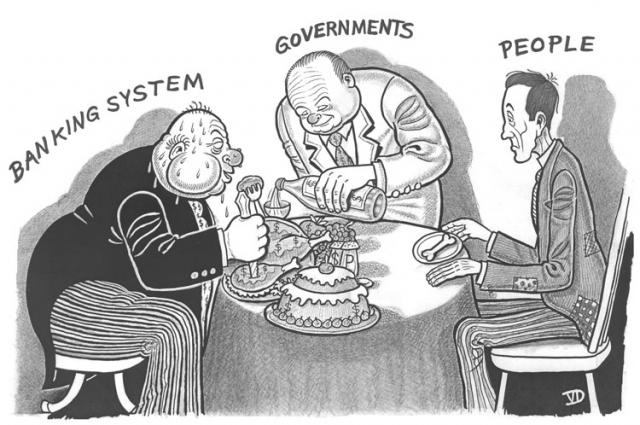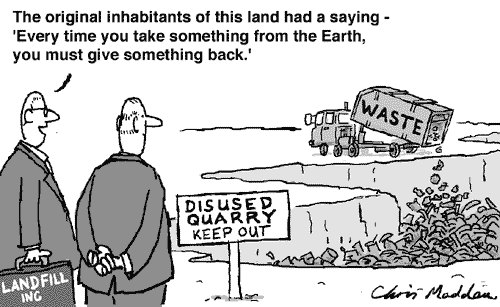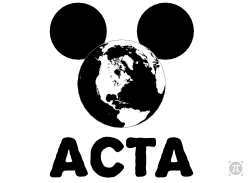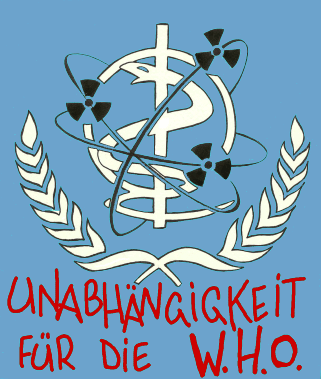Global Research December 17, 2009
This article is Part 3 in the Series, "The Origins of World War III."
Part 1: An Imperial Strategy for a New World Order: The Origins of World War III
Part 2: Colour-Coded Revolutions and the Origins of World War III

Introduction
In Parts 1 and 2 of this series, I have analyzed US and NATO geopolitical strategy since the fall of the Soviet Union, in expanding the American empire and preventing the rise of new powers, containing Russia and China. This Part examines the implications of this strategy in recent years; following the emergence of a New Cold War, as well as analyzing the war in Georgia, the attempts and methods of regime change in Iran, the coup in Honduras, the expansion of the Afghan-Pakistan war theatre, and spread of conflict in Central Africa. These processes of a New Cold War and major regional wars and conflicts take the world closer to a New World War. Peace can only be possible if the tools and engines of empires are dismantled.
Eastern Europe: Forefront of the New Cold War
In 2002, the Guardian reported that, “The US military build-up in the former Soviet republics of central Asia is raising fears in Moscow that Washington is exploiting the Afghan war to establish a permanent, armed foothold in the region.” Further, “The swift construction of US military bases is also likely to ring alarm bells in Beijing.”[1]
In 2004, it was reported that US strategy “is to position U.S. forces along an "arc of instability" that runs through the Caribbean, Africa, the Middle East, the Caucasus, Central Asia and southern Asia. It is in these parts of the world --generally poor, insular and unstable --that military planners see the major future threats to U.S. interests.”[2]
In 2005, it was reported that talks had been going on between the US and Poland since 2002, along with various other countries, “over the possibility of setting up a European base to intercept long-range missiles.” It was further reported that, “such a base would not have been conceivable before Poland joined Nato in 1999.”[3]
In November of 2007 it was reported that, “Russia threatened to site short-range nuclear missiles in a second location on the European Union's border yesterday if the United States refuses to abandon plans to erect a missile defence shield.” A senior Russian “army general said that Iskander missiles could be deployed in Belarus if US proposals to place 10 interceptor missiles and a radar in Poland and the Czech Republic go ahead.” Putin “also threatened to retrain Russia's nuclear arsenal on targets within Europe.” However, “Washington claims that the shield is aimed not at Russia but at states such as Iran which it accuses of seeking to develop nuclear weapons that could one day strike the West.”[4]
This is a patently absurd claim, as in May 2009, Russian and American scientists released a report saying “that it would take Iran at least another six to eight years to produce a missile with enough range to reach Southern Europe and that only illicit foreign assistance or a concerted and highly visible, decade-long effort might produce the breakthroughs needed for a nuclear-tipped missile to threaten the United States.”[5] Even in December of 2007, the National Intelligence Estimate (NIE) released by all 16 US intelligence agencies reported that, “Iran halted its nuclear weapons program in 2003 and that the program remains frozen.”[6]
Russia has concerns not only about missile interceptors in Poland, which it claims are aimed at Russia, but is also concerned about “an advanced missile-tracking radar that the Pentagon wants to place in the Czech Republic.”[7] Further, in 2007, the Guardian reported that, “Russia is preparing its own military response to the US's controversial plans to build a new missile defence system in eastern Europe, according to Kremlin officials, in a move likely to increase fears of a cold war-style arms race.” A Kremlin spokesman said of the Polish missile defenses and the Czech radar system, that, “We were extremely concerned and disappointed. We were never informed in advance about these plans. It brings tremendous change to the strategic balance in Europe, and to the world's strategic stability.”[8]
In May of 2008, it was reported that, “President Dmitri A. Medvedev of Russia and President Hu Jintao of China met ... to conclude a deal on nuclear cooperation and together condemn American proposals for a missile shield in Europe. Both countries called the plan a setback to international trust that was likely to upset the balance of power.”[9]
In July of 2008, the Russian Foreign Ministry said that it “will be forced to make a military response if the U.S.-Czech missile defense agreement is ratified,” and that, “we will be forced to react not with diplomatic, but with military-technical methods.”[10] In August of 2008, the US and Poland reached a deal “to place an American missile defense base on Polish territory.” Russia responded by “saying that the move would worsen relations with the United States.”[11] Russia further said “the US had shown that Russia was the true target of the defensive shield, as tension between the two powers continued to rise over the conflict in Georgia.” The Deputy Head of Russia’s general staff “warned that Poland was making itself a target for Russia's military.”[12]
It was further reported that, “General Anatoly Nogovitsyn said that any new US assets in Europe could come under Russian nuclear attack with his forces targeting ‘the allies of countries having nuclear weapons’,” and that, “Such targets are destroyed as a first priority.”[13]
In April of 2009, Obama said, “that the U.S. missile defense system in the Czech Republic and Poland will go forward.”[14] In May of 2009, Russia said that it “could deploy its latest Iskander missiles close to Poland if plans to install U.S. Patriots on Polish soil go ahead.”[15] In July of 2009, Russian President Medvedev said that, “Russia will still deploy missiles near Poland if the US pushes ahead with a missile shield in Eastern Europe.”[16]
Iran and the China-Russia Alliance
The Bush regime used hostile rhetoric against Iran, threatening possible war against the country. However, Iran will not be in any way similar to the military adventurism seen in Iraq. A war against Iran will bring China and Russia to war with the west. Chinese and Russian investments with Iran, both in terms of military cooperation as well as nuclear proliferation and energy ties, have driven the interests of Iran together with those of China and Russia.
In 2007, both Russia and China warned against any attack on Iran by the west.[17] From 2004 onwards, China became Iran’s top oil export market, and Iran is China’s third largest supplier of oil, following Angola and Saudi Arabia. China and Iran signed a gas deal in 2008 worth 100 billion dollars. Further, “Beijing is helping Tehran to build dams, shipyards and many other projects. More than 100 Chinese state companies are operating in Iran to develop ports and airports in the major Iranian cities, mine-development projects and oil and gas infrastructures.” Also, “China, Iran and Russia maintain identical foreign policy positions regarding Taiwan and Chechnya,”[18] which only further strengthens their alliance.
In August of 2008, a senior Iranian defense official warned that any attack against Iran would trigger a world war.[19] In February of 2009, Iran and Russia announced that, “Iran and Russia are to boost military cooperation.”[20] Russia has also been selling arms and advanced weapons systems to both Iran and Venezuela.[21] In 2008, OPEC warned against an attack on Iran, saying that, “oil prices would see an ‘unlimited’ increase in the case of a military conflict involving Iran, because the group's members would be unable to make up the lost production.”[22]
In 2001, the Shanghai Cooperation Organization (SCO) was founded as a mutual security organization between the nations of China, Kazakhstan, Kyrgyzstan, Russia, Tajikistan, and Uzbekistan. Its main focus is on Central Asian security matters, such as “terrorism, separatism and extremism.” Nations with Observer status in the SCO are India, Mongolia, Pakistan and Iran. The SCO also emphasizes economic ties between the nations, and serves as a counter to American hegemony in Central Asia.[23]
In October of 2007, the SCO, headed by China, signed an agreement with the Collective Security Treaty Organization (CSTO), headed by Russia, in an effort to bolster and strengthen links in defense and security between the two major nations.[24] The CSTO was formed in 2002 between Armenia, Belarus, Kazakhstan, Kyrgyzstan, Russia and Tajikistan. In 2007, it was suggested that Iran could join the CSTO.[25] In April of 2009, it was reported that the CSTO is building up its cooperation with Iran, acting as a counterweight to NATO.[26] In February of 2009, following a summit, the CSTO had “produced an agreement to set up a joint rapid-reaction force intended to respond to the ‘broadest range of threats and challenges’.”[27] The rapid-reaction force “will comprise large military units from five countries - Kazakhstan, Kyrgyzstan, Russia, Uzbekistan and Tajikistan,” and is seen as a force to rival NATO.[28]
In April of 2009, Russia and China “announced plans for an intensified programme of military cooperation yesterday as part of a burgeoning ‘strategic partnership’,” and that, “As many as 25 joint manoeuvres will be staged this year in a demonstration of strengthening ties between Moscow and Beijing.” Further, “Russia and China staged their first joint war games in 2005 after resolving outstanding border disputes between them. However, Moscow views Beijing as a lucrative market for defence exports and has sold billions of dollars of weaponry to China since the collapse of the Soviet Union ended their Communist rivalry.” Important to note is that, “Both states have a keen interest in keeping the United States and Europe out of Central Asia as competition intensifies for access to the region’s enormous oil and gas reserves.”[29]
In June of 2009, “China and Russia signed a series of new agreements to broaden their collaborations in trade, investment and mining, including the framework on $700 million loan between Export-Import Bank of China and Russian Bank of Foreign Trade.” Of great importance, “Memorandums on bilateral gas and coal cooperation are likely to lead the two countries' energy links to cover all the main sectors, from coal, oil, electricity, gas to nuclear power.” The leaders of both nations said that they “hoped the two countries will also increase their joint projects in science and technology, agriculture, telecommunications and border trade.”[30]
In April of 2009, China and Russia signed a major oil pipeline deal to supply China with Russian oil.[31] In July of 2009, China and Russia underwent a week-long war game exercise of land and air forces, “designed to counter a hypothetical threat from Islamist extremists or ethnic separatists that both countries insist look increasingly realistic.” In particular, “both are driven by a growing sense of urgency stemming from what they see as a deteriorating security picture in Afghanistan and neighboring Pakistan.”[32]
The Georgian War: Spreading Conflict in the Caucasus
After the break-up of the Soviet Union in 1991, Georgia’s northern province of South Ossetia declared independence but failed to be internationally recognized. South Ossetia as well as Georgia’s other largely autonomous province, Abkhazia, had traditionally been allied with Russia. There had been long-standing tensions between South Ossetia and Georgia and a shaky ceasefire.
On August 1, 2008, six people were killed in South Ossetia when fighting broke out between Georgian and South Ossetian forces. Both sides blamed each other for opening fire first, with Russian peacekeepers blaming Georgia and the Georgians blaming Russian peacekeepers.[33]
On August 5, Russia announced that it would “defend its citizens living in the conflict zone” if a conflict were to erupt in Georgia, and the South Ossetian President said Georgia was “attempting to spark a full-scale war.” Further, South Ossetian children were being evacuated out of the conflict zone, an act that was “condemned” by Georgia, saying that the separatists were “using their youngsters as political propaganda.”[34]
On August 7, a ceasefire was announced between Georgia and South Ossetia, with Russia acting as a mediator between the two. On the night of August 7, five hours after the declared ceasefire, Georgian President Mikheil Saakashvili began a military operation against the capital city of South Ossetia, Tskhinvali.[35] The Georgian attack targeted hospitals, the university and left the city without food, water, electricity and gas.[36]
Georgian forces surrounded the city and their troops and tanks continued to assault the civilian targets. On the 8th of August, Russia called for an end to the military offensive. Reportedly, 2,000 civilians were killed by this point in South Ossetia, so Russia sent troops into the area. Russian Prime Minister Putin referred to Georgian actions as “genocide” and Russia also reportedly bombed a Georgian town. Immediately, the US called for “an end to the Russian bombings.” The Georgian President called it an “unprovoked brutal Russian invasion.” Much of Tskhinvali was left in ruins after the Georgian offensive, with 34,000 South Ossetian refugees in Russia.[37]
Georgia, which had 2,000 troops deployed in Iraq, announced on August 9th that they would be pulling 1,000 troops out of Iraq to be deployed into South Ossetia, with the US providing the transportation for Georgian troops to get back to Georgia.[38] However, the Russian advance pushed the Georgian troops back, recapturing the city and damaging much of Georgia’s military infrastructure. The Russian troops also entered the other breakaway province of Abkhazia and even occupied the Georgian city of Gori.
On August 12, the Russians announced an end to their military operations in Georgia and on August 13th, the last remaining Georgian troops pulled out of South Ossetia.
However, there is much more to this story than simply a conflict between a small Central Asian nation and Russia. It is important to remember the role played by American NGOs in putting the Georgian President Mikhail Saakashvili into power through the Rose Revolution in 2003 [See: Colour-Coded Revolutions and the Origins of World War III]. The US then developed closer ties with Georgia. Even before the Rose Revolution, in 2002, US military advisers were in Georgia in an effort to open up a “new front” in the war on terror, with Americans there to “train the Georgian army in how to counter militant activity.”[39] Also in 2002, hundreds of US Green Berets and 200 Special Forces arrived in Georgia to train Georgian forces “for anti-terrorism and counterinsurgency operations.”[40] Russia warned against US involvement in Georgia, saying that it could “complicate” the situation.[41]
US and Georgian troops even conducted war games and military exercises together. In July of 2008, it was reported that 1,000 US troops in Georgia began a military training exercise with Georgian troops called “Immediate Response 2008.” The same report stated that “Georgia and the Pentagon [cooperated] closely.” The training exercise came amidst growing tensions between Russia and Georgia, while the US was simultaneously supporting Georgia’s bid to become a NATO member.[42]
Further, 1,200 US servicemen and 800 Georgians were to train for three weeks at a military base near the Georgian capital of Tbilisi.[43] The exercise was being run in cooperation with NATO and was preceded by a visit to Georgia by US Secretary of State Condoleezza Rice, where she met with the President and stated that, “the future of Georgia is in NATO.”[44]
However, these exercises and increased military cooperation between the US and Georgia did not go unnoticed by Russia, which simultaneously began military exercises on the other side of the Caucasus mountains, involving up to 8,000 Russian servicemen.[45] Clearly, Russia itself was aware of the potential for a military conflict in the region.
When the conflict with Russia began, there were US military instructors in Georgia,[46] and Russia’s envoy to NATO also accused NATO of encouraging Georgia to take the offensive against South Ossetia.[47]
The US was not the only western nation to aid Georgia, as the unofficial NATO member, Israel, also played a part in arming Georgia. The Georgian tanks and artillery that captured the South Ossetian capital were aided by Israeli military advisers. Further, for up to a year leading up to the conflict, the Georgian President had commissioned upwards of 1,000 military advisers from private Israeli security firms to train the Georgian armed forces, as well as offer instruction on military intelligence and security. Georgia also purchased military equipment from Israel.[48]
The War in Georgia was designed to escalate tensions between NATO and Russia, using the region as a means to create a wider conflict. However, Russia’s decision to end the combat operations quickly worked to its benefit and had the effect of diminishing the international tensions. The issue of NATO membership for Georgia is very important, because had it been a NATO member, the Russian attack on Georgia would have been viewed as an attack on all NATO members. The war in Afghanistan was launched by NATO on the premises of ‘an attack against one is an attack against all.’
It also was significant that there was a large pipeline deal in the works, with Georgia sitting in a key strategic position. Georgia lies between Russia and Turkey, between the Caspian Sea and the Black Sea, and above Iran and Iraq. The significance of Georgia as a strategic outpost cannot be underestimated. This is true, particularly when it comes to pipelines.
The Baku Tblisi Ceyhan (BTC) Pipeline, the second largest pipeline in the world, travels from Baku, the capital of Azerbaijan, through Tbilisi, the capital of Georgia, to Ceyhan, a Mediterranean port city in Turkey. This pipeline creates a route that bypasses both Iran and Russia, to bring Caspian Basin oil resources “to the United States, Israel and Western European markets.” The US company Bechtel, was the main contractor for construction, procurement and engineering, while British Petroleum (BP), is the leading shareholder in the project.[49] Israel gets much of its oil via Turkey through the BTC pipeline route, which likely played a large part in Israel’s support for Georgia in the conflict,[50] as a continual standoff between the West and the East (Russia/China) takes place for control of the world’s resources.
Zbigniew Brzezinski, co-founder, with David Rockefeller, of the Trilateral Commission, and Jimmy Carter’s National Security Adviser who played a key role in the creation of the Afghan Mujahideen, which became known as Al-Qaeda, wrote an op-ed for Time Magazine at the outbreak of the Russia-Georgia conflict. Brzezinski, being a Cold War kingpin of geopolitical strategy, naturally blamed Russia for the conflict. However, he also revealed the true nature of the conflict.
He started by blaming Russia’s “invasion of Georgia” on its “imperial aims.” Brzezinski blamed much of this on the “intense nationalistic mood that now permeates Russia’s political elite.” Brzezinski went on to explain Georgia’s strategic significance; stating that, “an independent Georgia is critical to the international flow of oil,” since the BTC pipeline “provides the West access to the energy resources of central Asia.” Brzezinski warned Russia of being “ostracized internationally,” in particular its business elite, calling them “vulnerable” because “Russia’s powerful oligarchs have hundreds of billions of dollars in Western bank accounts,” which would be subject to a possible “freezing” by the West in the event of a “Cold War-style standoff.”[51] Brzezinski’s op-ed essentially amounted to geopolitical extortion.
Regime Change in Iran
There was, for many years, a split in the administration of George W. Bush in regards to US policy towards Iran. On the one hand, there was the hardliner neoconservative element, led by Dick Cheney, with Rumsfeld in the Pentagon; who were long pushing for a military confrontation with Iran. On the other hand, there was Condoleezza Rice as Secretary of State, who was pushing for a more diplomatic, or “soft” approach to Iran.
In February of 2006, Condoleezza Rice introduced a new Iran strategy to the Senate, “emphasizing the tools of so-called soft diplomacy. She called for ramping up funding to assist pro-democracy groups, public diplomacy initiatives, and cultural and education fellowships, in addition to expanding U.S.-funded radio, television, and Internet and satellite-based broadcasting, which are increasingly popular among younger Iranians.” She added that, “we are going to work to support the aspirations of the Iranian people for freedom in their country.” There were three main facets to the program: “Expanding independent radio and television”; “Funding pro-democracy groups,” which “would lift bans on U.S. financing of Iran-based nongovernmental organizations (NGOs), trade unions, human rights groups, and opposition candidates”; and “Boosting cultural and education fellowships and exchanges,” which “would help pay Iranian students and scholars to enroll in U.S. universities.”[52]
This marked a significant change in U.S. foreign policy with Iran, which would have the effect of making Iran’s domestic situation “more intense,” or as one expert put it, “this is the thing that can undo this regime.” Another expert stated that if the strategy failed, “we will have wasted the money, but worse than that, helped discredit legitimate opposition groups as traitors who receive money from the enemy to undermine Iran 's national interest.”[53]
In March of 2006, the Iraq Study Group was assembled as a group of high level diplomats and strategic elites to reexamine US policy toward Iraq, and more broadly, to Iran as well. It proposed a softer stance towards Iran, and one of its members, Robert Gates, former CIA director, left the Group in November of 2006 to replace Donald Rumsfeld as Secretary of Defense. Cheney had fought to keep his ally in the Pentagon, but had failed in not only that, but also in preventing Robert Gates from being his replacement.[54]
In February of 2006, the Guardian reported that the Bush administration received “a seven-fold increase in funding to mount the biggest ever propaganda campaign against the Tehran government,” and quoted Secretary Rice as saying, “we will work to support the aspirations of the Iranian people for freedom and democracy in their country.” The “US is to increase funds to Iranian non-governmental bodies that promote democracy, human rights and trade unionism,” which started in 2005 for the first time since 1980, and that, “the US would seek to help build new dissident networks.”[55]
In April of 2006, the Financial Times reported that, “The US and UK are working on a strategy to promote democratic change in Iran,” as “Democracy promotion is a rubric to get the Europeans behind a more robust policy without calling it regime change.”[56] Christian Science Monitor reported that the goal of the strategy was “regime change from within,” in the form of “a pro-democracy revolution.”[57]
In July of 2007, it was reported that the White House had “shifted back in favour of military action,” at the insistence of Cheney.[58] Josh Bolton, former US Ambassador to the United Nations, said in May of 2007, that US strategy consisted of three options: the first was economic sanctions, the second was regime change, and the third was military action. Bolton elaborated that, “we've got to go with regime change by bolstering opposition groups and the like, because that's the circumstance most likely for an Iranian government to decide that it's safer not to pursue nuclear weapons than to continue to do so. And if all else fails, if the choice is between a nuclear-capable Iran and the use of force, then I think we need to look at the use of force.” Ultimately, the aim would be “to foment a popular revolution.”[59]
In September of 2007, it was reported that the Bush administration was pushing the US on the warpath with Iran, as “Pentagon planners have developed a list of up to 2,000 bombing targets in Iran.” It was even reported that Secretary Rice was “prepared to settle her differences with Vice-President Dick Cheney and sanction military action.” It was reported that Rice and Cheney were working together to present a more unified front, finding a middle ground between Rice’s soft diplomacy, and Cheney’s preference to use “bunker-busting tactical nuclear weapons” against Iran.[60]
That same year, in 2007, the United States launched covert operations against Iran. ABC broke the story, reporting that, “The CIA has received secret presidential approval to mount a covert "black" operation to destabilize the Iranian government.” The President signed an order “that puts into motion a CIA plan that reportedly includes a coordinated campaign of propaganda, disinformation and manipulation of Iran's currency and international financial transactions.” The approval of these covert operations marked a temporary move away from pursuing overt military action.[61]
As the Telegraph reported in May of 2007, “Bush has signed an official document endorsing CIA plans for a propaganda and disinformation campaign intended to destabilise, and eventually topple, the theocratic rule of the mullahs.” As part of the plan, “the CIA [has] the right to collect intelligence on home soil, an area that is usually the preserve of the FBI, from the many Iranian exiles and emigrés within the US,” as “Iranians in America have links with their families at home, and they are a good two-way source of information.” Further, “The CIA will also be allowed to supply communications equipment which would enable opposition groups in Iran to work together and bypass internet censorship by the clerical regime.”[62]
“Soft” power became the favoured policy for promoting regime change in Iran. David Denehy, a senior adviser to the State Department’s Bureau of Near Eastern Affairs, was “charged with overseeing the distribution of millions of dollars to advance the cause of a more democratic Iran.” He was responsible for disbursing the $75 million that Ms. Rice asked the Senate for in February of 2006. The appropriations included “$36.1 million into existing television and radio programs beaming into Iran,” and “$10 million would pay for public diplomacy and exchange programs, including helping Iranians who hope to study in America,” and “$20 million would support the efforts of civil-society groups — media, legal and human rights nongovernmental organizations — both outside and inside Iran.” The administration was requesting an additional $75 million for 2008.[63]
In 2008, award-winning journalist Seymour Hersh revealed in the New Yorker that in late 2007, Congress approved “a request from President Bush to fund a major escalation of covert operations against Iran, according to current and former military, intelligence, and congressional sources.” While the Cheney hard-liners in the Bush administration were long pushing for a direct military confrontation with Iran, the military had to be reigned in from being controlled by the neo-conservatives. Robert Gates, a former CIA director, had replaced Donald Rumsfeld as Defense Secretary, and while still saber rattling Iran, had to take a more strategic position, as many military leaders in the Pentagon felt “that bombing Iran is not a viable response to the nuclear-proliferation issue.”[64]
The covert operations that were approved ran at a cost of approximately $400 million dollars, and “are designed to destabilize the country’s religious leadership. The covert activities involve support of the minority Ahwazi Arab and Baluchi groups and other dissident organizations. They also include gathering intelligence about Iran’s suspected nuclear-weapons program.” The operations were to be expanded under both the CIA and JSOC (the Joint Special Operations Command). The focus was “on undermining Iran’s nuclear ambitions and trying to undermine the government through regime change,” of which a major facet was “working with opposition groups and passing money.” Hersh elaborated:
Many of the activities may be being carried out by dissidents in Iran, and not by Americans in the field. One problem with “passing money” (to use the term of the person familiar with the Finding) in a covert setting is that it is hard to control where the money goes and whom it benefits. Nonetheless, the former senior intelligence official said, “We’ve got exposure, because of the transfer of our weapons and our communications gear. The Iranians will be able to make the argument that the opposition was inspired by the Americans. How many times have we tried this without asking the right questions? Is the risk worth it?” One possible consequence of these operations would be a violent Iranian crackdown on one of the dissident groups, which could give the Bush Administration a reason to intervene.[65]
Included in the strategy was to use ethnic tensions to undermine the government; however, this strategy is flawed. Unlike Pakistan, Lebanon, and Iraq, Iran is a much older country, “like France and Germany—and its citizens are just as nationalistic. The U.S. is overestimating ethnic tension in Iran.”[66] This turned out to be an important point in regards to the elections in the summer of 2009.
Flashback to 1953
To understand the nature of American and British “democracy promotion” in Iran, it is important to examine their historical practices regarding “democracy” in Iran. Specifically, the events of 1953 present a very important picture, in which the United States orchestrated its first foreign coup, with guidance and direction from the British, who had extensive oil interests in Iran. The first democratically elected government of Mohommad Mossadeq in 1951 announced the nationalization of the Anglo-Iranian Oil Company (later to be re-named British Petroleum), which had an exclusive monopoly on Iranian oil. This naturally angered the British, who, in 1952, convinced the CIA to help in a plot to overthrow Iran’s government.
The idea to topple the Iranian government was born in Britain, but it didn’t take much to convince the CIA to launch a joint operation with the SIS. Government documents were made public which revealed that CIA “officers orchestrating the Iran coup worked directly with royalist Iranian military officers, handpicked the prime minister's replacement, sent a stream of envoys to bolster the shah's courage, directed a campaign of bombings by Iranians posing as members of the Communist Party, and planted articles and editorial cartoons in newspapers.” The strategy was aimed at supporting an Iranian General and the Shah through CIA assets and financing, which would overthrow Mossadeq, “particularly if this combination should be able to get the largest mobs in the streets.”[67]
The Shah was to play a pivotal role, as he was “to stand fast as the C.I.A. stirred up popular unrest and then, as the country lurched toward chaos, to issue royal decrees dismissing Dr. Mossadegh and appointing General Zahedi prime minister.” CIA operatives stoked pressure by pretending to be Iranian Communists, threatening Muslim leaders with “savage punishment if they opposed Mossadegh,” in an effort to stir anti-Communist and anti-Mossadeq sentiments in the religious community. The CIA even bombed the house of a prominent Muslim. Further, the CIA was advancing a major propaganda campaign, as a major newspaper owner was paid $45,000 to support the efforts. The CIA, once the coup was underway, used American media as propaganda, in an attempt to legitimize the coup plotters, as the CIA sent The Associated Press a news release saying that, “unofficial reports are current to the effect that leaders of the plot are armed with two decrees of the shah, one dismissing Mossadegh and the other appointing General Zahedi to replace him.” The CIA also disseminated this propaganda through Iranian media.
Following the beginning of the coup, which began on August 15, Mossadeq suspended the Parliament, which ultimately played “into the C.I.A.'s hands.” After having several plotters arrested, he let his guard down. Then the American Embassy planned a counterattack for August 19, specifically using religious forces. At this time, the Communist Party blamed “Anglo-American intrigue” for the coup. However, just as the CIA thought it was a failure, Iranian papers began publishing en masse the Shah’s decrees, and suddenly large pro-Shah crowds were building in the streets. An Iranian journalist who was an important CIA agent, “led a crowd toward Parliament, inciting people to set fire to the offices of a newspaper owned by Dr. Mossadegh's foreign minister. Another Iranian C.I.A. agent led a crowd to sack the offices of pro-Tudeh papers.”
Then coup supporters in the military began to enter the streets, and soon “the crowds began to receive direct leadership from a few officers involved in the plot and some who had switched sides. Within an hour the central telegraph office fell, and telegrams were sent to the provinces urging a pro-shah uprising. After a brief shootout, police headquarters and the Ministry of Foreign Affairs fell as well.” Interestingly, according to the declassified documents, the CIA “hoped to plant articles in American newspapers saying Shah Mohammed Reza Pahlevi's return resulted from a homegrown revolt against a Communist-leaning government,” but that ultimately, “its operatives had only limited success in manipulating American reporters.” The CIA planted stories in US media, such as one instance where the State Department planted a CIA study in Newsweek.
One of the key lessons the CIA learned in this operation, was that it “exposed the agency's shortcomings in manipulating the American press.” The CIA even manipulated a reporter with the New York Times to disseminate propaganda. While Soviet media was proclaiming the US responsible for the coup, American mentions of this in the media dismissed these accusations outright, and never “examined such charges seriously.”[68]
By the end of Operation Ajax, as the CIA coup was codenamed, “some 300 people had died in firefights in the streets of Tehran,” largely due to the CIA “provoking street violence.” The coup resulted in “more than two decades of dictatorship under the Shah, who relied heavily on US aid and arms.”[69]
The West Sponsors Terrorists in Iran
In 2005, Scott Ritter, former UN weapons inspector, reported that, “the Mujahadeen el-Khalq, or MEK, an Iranian opposition group, once run by Saddam Hussein's dreaded intelligence services,” was now working for the CIA in terror bombings inside Iran.[70] In February of 2007, the Telegraph reported that, “America is secretly funding militant ethnic separatist groups in Iran in an attempt to pile pressure on the Islamic regime to give up its nuclear programme.”
The CIA operations “involve dealing with movements that resort to terrorist methods,” and the article noted that, “there has been a wave of unrest in ethnic minority border areas of Iran, with bombing and assassination campaigns against soldiers and government officials,” and interestingly, the CIA operations are focused on “helping opposition militias among the numerous ethnic minority groups clustered in Iran's border regions.” A former State Department counter-terrorism agent was quoted as saying, “The latest attacks inside Iran fall in line with US efforts to supply and train Iran's ethnic minorities to destabilise the Iranian regime.”[71]
ABC News reported in April of 2007 that, “A Pakistani tribal militant group responsible for a series of deadly guerrilla raids inside Iran has been secretly encouraged and advised by American officials since 2005.” The group, named Jundullah, operates out of the Baluchistan province in Pakistan, on the boarder of Iran, and “has taken responsibility for the deaths and kidnappings of more than a dozen Iranian soldiers and officials.”[72]
In 2008, Pakistan’s former Army Chief said that, “the US is supporting the outlawed Jundullah group to destabilize Iran,” and that, “the US is providing training facilities to Jundullah fighters--located in eastern areas of Iran--to create unrest in the area and affect the cordial ties between Iran and its neighbor Pakistan.”[73]
The 2009 Election Protests
The events of 1953 presented a blueprint for the 2009 Iranian election protests, an attempted “soft revolution” in Iran, also drawing from the “colour revolutions” in the post-Soviet states of Eastern Europe [See: Colour-Coded Revolutions and the Origins of World War III]. It is the thesis of this author that the 2009 election riots in Iran were a covert US (and British) plot designed to orchestrate regime change in Iran. The aim was to put in place a US-friendly leader, and thus, exert political, economic and strategic hegemony over Iran. Following the stratagem of US-funded “colour revolutions” in the former Soviet bloc, but with heavy CIA influence, drawing parallels with the 1953 coup; the plot was ultimately unsuccessful.
While the 1953 coup revealed the failure of the CIA to greatly influence and manipulate US media, the 2009 riots revealed a great success in American media manipulation; however, ironically, it was the focus on this triumphant success that may have impeded the ultimate success of the plot. American popular perception of an illegitimate election and political oppression was enough to support regime change, but not to enact regime change. So, in a bitter irony for the US, the failure of the 1953 coup, became the success of the 2009 plot; while the success of the 1953 coup, became the failure of the 2009 plot. It just so happens that the success of the 1953 coup . . . was that it worked.
In November of 2008, Iranian media reported that, “the White House is making strenuous efforts to orchestrate a "Velvet Revolution" in Iran.” The former Iranian ambassador to the United Nations said that, “that Washington is conspiring to foment discord among Iranians in order to topple the Tehran government.”[74]
Iranian media reported in April of 2009, two months prior to the Presidential elections, that Iran's Revolution Guards Corps (IRGC) had “uncovered a plot for a ‘soft overthrow’ of the country's government,” and “accused the Netherlands of conspiring to foment a velvet revolution in the country by supporting the opposition through the media and different Internet sites.” In 2005, the Dutch parliament funded a 15 million euro “media polarization campaign” inside Iran, which was “Coupled with British assistance and secret US funding.”[75]
In the lead-up to the elections, there were increasing attacks within Iran. Two weeks before the election, on May 28, 2009, in southeastern Iran, a Shi’a mosque bombing resulted in the deaths of 20 people. An Iranian official accused the United States of involvement in arming the terrorists, who committed the act in a Sunni area of Iran, a religious minority within the country. Jundullah, the terrorist organization armed and funded by the US through the CIA, claimed responsibility for the bombing.[76] The following day, Iranian President Mahmoud Ahmadinejad's election campaign office was attacked by gunmen in the same city as the bombing, resulting in several injuries.[77] These attacks, aimed at stirring up religious tensions, are reminiscent of the attacks carried out by the CIA in Iran in the 1953 coup.
The day before the election, on June 11, 2009, it was reported that the National Endowment for Democracy, the main institution behind the “colour revolutions” in Eastern Europe (covered in Part 2 of this series), had spent a lot of money that made it into the hands of pro-Mousavi groups inside Iran, as Mousavi was the Western favoured candidate in the Iranian elections. It was even reported that there was talk of a “green revolution” in Iran, as the Mousavi campaign was full of green scarves and banners at the rallies.[78]
On June 10, 2009, two days before the election, a New York Times blog reported that there was concern among many Ahmadinejad supporters in Iran that they fear “that what they are witnessing is a local version of the Orange Revolution, which swept an opposition government into power in Ukraine.”[79]
On June 12, 2009, the Iranian election took place. Immediately, the propaganda machine went into effect and the plan for a colour revolution in Iran was underway. Iran’s state run news agency reported that Ahmadinejad had won in a landslide victory of 69%. Immediately, his main rival and the American-favoured candidate, Moussavi, claimed that he had won and that there were voting “irregularities,” and was quoted as saying, “I am the absolute winner of the election by a very large margin.”[80]
Immediately, Western governments denounced the election as a fraud, and protests began in the streets of Tehran, where young people clad in the green of the Mousavi campaign declared “Death to the Dictator” referring to Ahmadinejad. Mousavi encouraged the protests to continue, and in the second day of protests, young people “broke the windows of city buses on several streets in central Tehran. They burned banks, rubbish bins and piles of tyres used as flaming barricades. Riot police hit some of the protesters with batons while dozens of others holding shields and motorcycles stood guard nearby.” Western governments then openly declared their solidarity with the protests and denounced the Iranian government for repressing them.[81]
Despite all the claims of vote fraud and irregularities, those taking this position offered no actual evidence to support it. As Politico reported on June 15, the people proclaiming fraud “ignore the fact that Ahmadinejad’s 62.6 percent of the vote in this year’s election is essentially the same as the 61.69 percent he received in the final count of the 2005 presidential election.” These people also conveniently ignore many popular perceptions within Iran, such as the fact that most Iranians saw Ahmadinejad as having won the televised debates and that he can also be viewed as a populist campaigner. Ahmadinejad has the support of a large amount of Iranians, “including the religiously pious, lower-income groups, civil servants and pensioners.”[82]
Some “evidence” for fraud was highly circumstantial, in that it claimed that because Mousavi comes from an Azeri background, “he was guaranteed to win Iran’s Azeri-majority provinces,” and so, when Ahmadinejad won in these provinces, “fraud is the only possible explanation.” However, Ahmadinejad also speaks Azeri quite fluently, had formerly served as an official in two Azeri areas, and the Supreme Leader of Iran, Ayatollah Khameini, is also Azeri.[83]
This also ignores the class based voting of Iranians. While the West tends to portray the Middle East and Africa through an Orientalist lens, viewing them as “the Other,” and often portraying the people of these regions as backwards or barbaric, reality is a far cry from Western perception. People in the Middle East, including in Iran, vote with concerns about the economy and social conditions in mind just as much as voters in the west do. Voting in the Middle East is not simply based upon religious or ethnic differences, there is more to consider, and any analysis that forgets this is flawed. Even the Financial Times was quoted as saying, “Change for the poor means food and jobs, not a relaxed dress code or mixed recreation,” and that, “Politics in Iran is a lot more about class war than religion.”[84]
As James Petras wrote, “The only group, which consistently favored Mousavi, was the university students and graduates, business owners and the upper middle class.”[85] These also happened to be the highly Westernized Iranians. The Iranians protesting in the “green revolution” were holding signs written in English, and were giving interviews to western media all in English. Many were western educated and raised. The Iranian diaspora in the west was also largely supportive of the “green revolution,” as they are the sons and daughters of those who had emigrated out of Iran following the 1979 Iranian Revolution. They are the children of the exiled Iranian capitalist class, and do not represent a fair assessment of the internal Iranian population. After all, the poor and the masses do not have the means to emigrate to the west. Naturally, many westernized youth in Iran have legitimate concerns and social issues with the present way of governance within Iran; however, the majority of Iranians are more concerned with their daily meals than Islamic dress codes.
As Petras further pointed out, “The ‘youth vote’, which the Western media praised as ‘pro-reformist’, was a clear minority of less than 30% but came from a highly privileged, vocal and largely English speaking group with a monopoly on the Western media.”[86] Even the Washington Post reported on June 15, about a major Western poll conducted in Iran three weeks prior to the election, in which it “showed Ahmadinejad leading by a more than 2 to 1 margin -- greater than his actual apparent margin of victory,” and the “scientific sampling from across all 30 of Iran's provinces showed Ahmadinejad well ahead.”
The Washington Post article further pointed out that, “Much commentary has portrayed Iranian youth and the Internet as harbingers of change in this election. But our poll found that only a third of Iranians even have access to the Internet, while 18-to-24-year-olds comprised the strongest voting bloc for Ahmadinejad of all age groups.” Further, the only demographic where Mousavi was “leading or competitive with Ahmadinejad were university students and graduates, and the highest-income Iranians.” The article ended by saying that, “The fact may simply be that the reelection of President Ahmadinejad is what the Iranian people wanted.”[87]
The Internet played a very large role in the international perception of the Iranian elections, as social networking sites like Twitter and Facebook were used to advance the aims of the “green revolution,” often giving it the name the “Twitter Revolution.” Remember that in 2007, “a
CIA plan that reportedly includes a coordinated campaign of propaganda, disinformation and manipulation,” was put into effect, which were “intended to destabilise, and eventually topple, the theocratic rule of the mullahs.” As part of this, “The CIA will also be allowed to supply communications equipment which would enable opposition groups in Iran to work together and bypass internet censorship by the clerical regime.”[88]
In the midst of the protests, the Iranian government cracked down on dissent, banning foreign reporters and blocking websites. As the Washington Times reported, “Well-developed Twitter lists showed a constant stream of situation updates and links to photos and videos, all of which painted a portrait of the developing turmoil. Digital photos and videos proliferated and were picked up and reported in countless external sources safe from the regime's Net crackdown.”[89] Naturally, all of this information came from the upper class Western students, who had access to this technology, which they were using in English.
On June 15, “a 27-year-old State Department official, Jared Cohen, e-mailed the social-networking site Twitter with an unusual request: delay scheduled maintenance of its global network, which would have cut off service while Iranians were using Twitter to swap information and inform the outside world about the mushrooming protests around Tehran.” Further, the New York Times reported that, “Mr. Cohen, a Stanford University graduate who is the youngest member of the State Department’s policy planning staff, has been working with Twitter, YouTube, Facebook and other services to harness their reach for diplomatic initiatives.”[90]
It turned out only a small number of people in Iran actually used Twitter for organizational purposes; however, “Twitter did prove to be a crucial tool in the cat-and-mouse game between the opposition and the government over enlisting world opinion.” Twitter also took part in spreading disinformation during the protests, as the New York Times pointed out that, “some of the biggest errors on Twitter that were quickly repeated and amplified by bloggers: that three million protested in Tehran last weekend (more like a few hundred thousand); that the opposition candidate Mir Hussein Moussavi was under house arrest (he was being watched); that the president of the election monitoring committee declared the election invalid last Saturday (not so).”[91]
On the 28th of June, the Iranian Intelligence Minister blamed western powers, specifically the United States and Britain, for the post-election protests and violence. Iran even arrested British embassy staff in Tehran.[92] On July 3, the head of Iran's Guardians Council said that, “British embassy staff would be put on trial for inciting violent protests.” Iran had arrested nine “British embassy employees it accused of playing a role in organising pro-democracy demonstrations,” but had released seven of them by July. However, one Embassy staff member had been accused of “a significant role” in the election riots.[93]
Amidst all the British denials of any involvement, the Telegraph revealed in late July that two exiles, “Azadeh Assadi and Vahid Saderigh have been providing crucial support to opposition leaders in Tehran from their homes in London,” who “take their cue from Iran's Green Movement which has been the rallying point for an unprecedented challenge to the leadership of the Islamic Republic.” They further organized the protests at the Iranian Embassy in London, which lasted for 31 days, longer than anywhere else.[94]
Hossein Rassam, head of the security and political division of the British Embassy in Tehran, was arrested under suspicions that he played a key role in the protests “in providing guidance to diplomats and reporters of the British media.” Further, an Iranian-American scholar was arrested. In 2007, Iran arrested “Haleh Esfandiari, head of the Wilson Center's Middle East program, and Kian Tajbakhsh, with links to the Soros institute, on suspicions of endangering the country's national security.” They were released after three months detention.[95]
Of great interest were the statements made my former high-level American strategic kingpins of the foreign policy establishment in the wake of the riots: among them, Henry Kissinger, Zbigniew Brzezinski, and Brent Scowcroft. Former US National Security Adviser Brent Scowcroft, in an interview with Al-Jazeera shortly after the start of the protests, when asked if the US had intelligence agents on the ground in Iran, replied, without hesitation, “Of course we do.” The interviewer asked if they would help the protesters, to which Scowcroft replied, “They might be, who knows. But that’s a far cry from helping protesters against the combined might of the Revolutionary Guard, the militias, and so on, and the police, who are so far, completely unified.” He explained that he feels the “movement” for change is there in Iran, and that, “It’s going to change Iran, I think that is almost inevitable.”[96]
Zbigniew Brzezinski, former National Security Adviser in the Jimmy Carter administration, co-founder with David Rockefeller of the Trilateral Commission, and arch-hawk geopolitical strategist, was interviewed on CNN shortly after the protests began. When asked how the situation could be worked out to resemble Eastern Europe, as in, successful colour revolutions putting western puppets in power, Brzezinski responded, “Well, I think it will not work out the way Eastern Europe worked out, and hopefully it will not end the way Tiananmen Square ended. Eastern Europe became intensely pro-Western, pro-American, and so forth.” Further, he explained, “If there is a change of regime in Iran, there is a greater chance of accommodation, and I think that is to be fervently wished for. But that requires patience, intelligent manipulation, moral support, but no political interference.”[97]
Henry Kissinger, former National Security Adviser and Secretary of State; was interviewed by BBC at the outbreak of the riots. He stated that, “Now if it turns out that it is not possible for a government to emerge in Iran that can deal with itself as a nation rather than as a cause, then we have a different situation. Then we may conclude that we must work for regime change in Iran from the outside.”[98]
Clearly, there were extensive Western interests and involvement behind the Iranian “democracy” movement that resulted in the protests following the election. However, the ultimate goal of the attempted “colour revolution” failed, as it did not succeed in achieving regime change. Brzezinski’s strategy of “intelligent manipulation” ultimately failed, and so, as Henry Kissinger stated, “we may conclude that we must work for regime change in Iran from the outside.”
Latin America Is Not to Be Left Out: The Coup in Honduras
It is important to take a look at recent events in Latin America in an imperial context to understand how wide and vast American and NATO imperial strategy is. While the world’s eyes and media were fixated on events in Iran, another event was taking place in Latin America, which was conveniently ignored by international media.
On June 28, 2009, the Honduran military kidnapped the President of Honduras and flew him into exile. The official line was that the coup was prompted when Manuel Zelaya, the President of Honduras, was attempting to schedule a poll on holding a referendum about rewriting the constitution. The Supreme Court secretly issued an arrest warrant for Zelaya on June 26, “charging him with treason and abuse of power.”[99] The military entered his house two days later, and put him on a military plane to Costa Rica, and the same day, the Honduran Congress voted to remove Zelaya and replace him with the Speaker of Congress Roberto Micheletti.
Zelaya happened to be a close ally of Venezuelan President Hugo Chavez, as well as Bolivian President Evo Morales; who represent the populist leaders of the new move to the left in Latin America, and pose a strong opposition force to the hegemony of US and Western interests in the region. Hugo Chavez alleged that the coup had the hands of the United States in it, and that the upper class in Honduras helped and “have turned Honduras into a 'banana republic', into a political, military and terror base for the North American empire.”[100]
The New York Times reported that the Obama administration was “surprised” by the coup, “But they also said that they had been working for several weeks to try to head off a political crisis in Honduras as the confrontation between Mr. Zelaya and the military over his efforts to lift presidential term limits escalated.” Further, “The United States has long had strong ties to the Honduras military and helps train Honduran military forces.” It was further reported that Secretary of State Hilary Clinton visited Zelaya on June 2, and that the United States thought Zelaya’s plans for reforming the Constitution was a “bad idea.” The US Ambassador to Honduras had held discussions with military officials where “There was talk of how they might remove the president from office, how he could be arrested, on whose authority they could do that.”[101]
As it turned out, the General in the Honduran Army who overthrew Zelaya “is a two-time graduate of the U.S. Army School of the Americas, an institution that has trained hundreds of coup leaders and human rights abusers in Latin America.” Past graduates have included Argentine Gen. Leopoldo Galtieri, Guatemalan dictator Gen. Efrain Rios Montt, “Panamanian dictators Gen. Omar Torrijos, who overthrew a civilian government in a 1968 coup, and Gen. Manuel Noriega, a five-time SOA graduate, who ruled the country and dealt in drugs while on the CIA payroll,” Ecuadoran dictator Gen. Guillermo Rodriguez, Bolivian dictators Gen. Hugo Banzer Suarez and Gen. Guido Vildoso Calderon, and Peruvian strongman Gen. Juan Velasco Alvarado.[102]
As was reported the following day of the coup, over the previous ten years, “the United States has delivered $18.41 million in weapons and defense articles to Honduras through the foreign military sales program,” with Foreign Military Financing totaling $7.3 million between 2003 and today, and “International Military Education and Training funds in that same period came to $14.82 million.”[103]
The Washington Post reported, two days following the coup, that when Clinton was asked if it was a US priority to see Zelaya reinstated, she responded, “We haven't laid out any demands that we're insisting on, because we're working with others on behalf of our ultimate objectives.” Zelaya had fired Gen. Romeo Vasquez prior to the coup, and Air Force commander, Gen. Luis Javier Prince Suazo, along with many other military leaders resigned. Both Vasquez and Suazo were trained at the School of the Americas.[104]
An article in the Guardian published a few days after the coup stated that, as countries around the world condemned the coup and called for the reinstatement of Zelaya, “Washington's ambivalence has begun to raise suspicions about what the US government is really trying to accomplish in this situation.” One possibility for this is that “the Obama administration may want to extract concessions from Zelaya as part of a deal for his return to office.” Following the coup, oppression in Honduras was rampant: “political repression, the closing of TV and radio stations, the detention of journalists, detention and physical abuse of diplomats and what the Committee to Protect Journalists has called a "media blackout" have yet to draw a serious rebuke from Washington.” As the author astutely stated:
The battle between Zelaya and his opponents pits a reform president who is supported by labour unions and social organisations against a mafia-like, drug-ridden, corrupt political elite who is accustomed to choosing not only the supreme court and the Congress, but also the president. It is a recurrent story in Latin America, and the US has almost always sided with the elites.[105]
This harks back to 2002, when the United States had its hands involved in the attempted coup in Venezuela to oust President Hugo Chavez, which ultimately failed. In the months leading up to the attempted coup in April 2002, US officials held a series of meetings with “Venezuelan military officers and opposition activists.” Further, “a few weeks before the coup attempt, administration officials met Pedro Carmona, the business leader who took over the interim government after President Hugo Chavez was arrested.”
The Pentagon even “confirmed that the Venezuelan army's chief of staff, General Lucas Romero Rincon, visited the Pentagon in December and met the assistant secretary of defence for western hemispheric affairs.” Further, when “Mr Carmona and other opposition leaders came to the US they met Otto Reich, the assistant secretary of state for western hemisphere affairs.” Otto Reich was a veteran of the Reagan-era “dirty tricks” in Latin America, such as the contra operations, which involved the US funding drug-running terrorists and death squads, and Reich “was the head of the office of public diplomacy in the state department, which was later found to have been involved in covert pro-contra propaganda.”[106]
The Observer reported that the coup attempt in 2002 “was closely tied to senior officials in the US government.” Among the officials involved, “Elliot Abrams, who gave a nod to the attempted Venezuelan coup, has a conviction for misleading Congress over the infamous Iran-Contra affair.” There was of course Otto Reich, who met with all the coup leaders in the months preceding the coup. Finally, there was John Negroponte, who was in 2002 “ambassador to the United Nations. He was Reagan's ambassador to Honduras from 1981 to 1985 when a US-trained death squad, Battalion 3-16, tortured and murdered scores of activists. A diplomatic source said Negroponte had been 'informed that there might be some movement in Venezuela on Chavez' at the beginning of the year.”[107]
Two weeks following the coup in Honduras, Roberto Micheletti, the man who replaced Zelaya following the coup, showed up at the house of President Óscar Arias of Costa Rica, who was to mediate between the “interim government” and Zelaya. Micheletti however, was accompanied with an interesting cast of characters. He arrived with six advisers, among them, “an American public relations specialist who has done work for former President Bill Clinton and the American’s interpreter, and an official close to the talks said the team rarely made a move without consulting him.” International pressure for US sanctions on Honduras was building, however:
Mr. Micheletti has embarked on a public relations offensive, with his supporters hiring high-profile lawyers with strong Washington connections to lobby against such sanctions. One powerful Latin American business council hired Lanny J. Davis, who has served as President Clinton’s personal lawyer and who campaigned for Mrs. Clinton for president.
[. . . ] Mr. Micheletti brought the adviser from another firm with Clinton ties to the talks in Costa Rica. The adviser, Bennett Ratcliff of San Diego, refused to give details about his role at the talks.
“Every proposal that Micheletti’s group presented was written or approved by the American,” said another official close to the talks, referring to Mr. Ratcliff.[108]
Clearly, whatever the end result, which has yet to be determined, the hand of the United States can be seen in the Honduran coup. The bias and ultimately the failure of the international media became quite evident as a result of the coup. While the global media, particularly the western corporate media, were devoting non-stop coverage to the Iranian elections, proclaiming fraud, while offering no evidence; a military coup ousting a democratically elected president and installing an oppressive dictatorship which immediately began its heavy handed repression received scant attention. The western media attacked an actual democratic process in action, while ignoring a military assault against democracy. Which story receives more coverage is determined by the interests involved: in Iran, the West wanted a new government, so the media pushed for one; in Honduras, the US wanted a new government, so the media turned a blind eye while they got one through non-democratic means.
The Afghanistan-Pakistan War Theatre
Within days of getting into office, President Obama authorized a missile strike in Pakistan, which killed several civilians. Obama continued with this strategy, after Bush, in July of 2008, “authorized the C.I.A. and the Joint Special Operations Command to make ground incursions into Pakistan.”[109] This was to set the pace for US strategy in the region, particularly in relation to Afghanistan and Pakistan.
In late March, Obama announced his plan for a new Afghanistan and Pakistan strategy, which are to be a combined strategy. As part of the strategy, known as the AfPak strategy, “More U.S. troops, civilian officials and money will be needed,” and “Obama pledged to tighten U.S. focus on Pakistan.” Further, Obama announced in late March that, “he would send 4,000 U.S. troops -- beyond the additional 17,000 he authorized” in February, “to work as trainers and advisers to the Afghan army, and hundreds more civilian officials and diplomats to help improve governance and the country's economy,” bringing the total number of US troops up to 60,000.[110]
In May, a major event took place in military circles, as one of the few times in over 50 years an American wartime general was fired in the field. In May of 2009, Defense Secretary Robert Gates fired the top general in Afghanistan saying that what was needed was “fresh thinking” and “fresh eyes” on Afghanistan. Gates “recommended that President Obama replace McKiernan with a veteran Special Operations commander, Lt. Gen. Stanley A. McChrystal.” As the Washington Post reported, McKiernan, the general whom Gates fired, “was viewed as somewhat cautious and conventionally minded.”[111] Could it be that McKiernan did not see the AfPak strategy as a viable option; that it went against “caution”?
His replacement, General McChrystal, was “the director of the Pentagon's Joint Staff. From 2006 to August 2008, he was the forward commander of the U.S. military's secretive Joint Special Operations Command, responsible for capturing or killing high-level leaders of the Sunni insurgent group al-Qaeda in Iraq.”[112] One expert summed up the new General as such: “McChrystal kills people.” One senior military official at the Pentagon asked; “what message are we sending when our high-value-target hunter is sent to lead in Afghanistan?”[113]
However, there is another twist to this story. As Pulitzer Prize winning journalist, Seymour Hersh revealed, Cheney created a special unit called the Joint Special Operations Command (JSOC), which was to carry out high-level assassinations. This unit was kept a secret for many years, and Hersh referred to it as an “Executive assassination ring.” Hersh reported that they carried out many assassinations, “not just in Iraq and Afghanistan, it's in a lot of other countries, in the Middle East and in South Asia and North Africa and even central America.” The new General of the AfPak war theatre, Stanley McChrystal, used to run Cheney’s assassination squad.[114]
At the end of November 2009, Obama announced a surge of an additional 30,000 troops to Afghanistan, “bringing the total American force to about 100,000.”[115] Further, in early December, it was reported that Obama “authorized an expansion of the C.I.A.’s drone program in Pakistan’s lawless tribal areas, officials said this week, to parallel the president’s decision, announced Tuesday, to send 30,000 more troops to Afghanistan.”[116]
Clearly, the Afghanistan-Pakistan strategy will only further inflame the region in conflict and turmoil. Expanding the Afghan war into Pakistan is akin to playing with matches around a stick of dynamite. Perhaps this was the clarity of the previous general, McKiernan, in seeing this strategic insanity, and thus, the reason for his removal. The destabilization of this region threatens all of the neighboring countries, including India, China, Russia, Turkey and Iran. The possibility of creating a much wider war in the region, and even between the great powers, is ever increasing.
Africa and AFRICOM
During the Cold War, Africa was an imperial battleground between the USSR and the US-NATO powers, with the ultimate goal being the control over strategic resource-rich areas. Since the collapse of the Soviet Union, Russia’s influence in Africa largely dissipated, and with that, came the neo-imperial struggle among the western powers for control over key strategic points. Now, the great battle in Africa is between the NATO powers, primarily the United States, and China, which has had exponential growth and influence on the continent.
The 1990s saw the Rwandan genocide as a key event in Africa, which was, in actuality, a struggle between France and the United States over the key strategic location of Rwanda. The World Bank and IMF laid the groundwork for conflict, creating the economic conditions that exacerbated colonial-era ethnic tensions. Meanwhile, the United States, through its proxy state of Uganda, funded military operations and trained the Rwandan Patriotic Front (RPF), which conducted military operations from Uganda into Rwanda. The Civil War waged from 1990-1993, with the US funding all sides of the conflict. In 1994, the RPF shot down the plane carrying the Presidents of Rwanda and Burundi, which sparked the genocide. Following the genocide, the US-trained puppet, Paul Kagame, became President of Rwanda.[117]
Continue: http://www.globalresearch.ca
http://www.internationalnews.fr/article-a-new-world-war-for-a-new-world-order-by-andrew-gavin-marshall-41342333.html





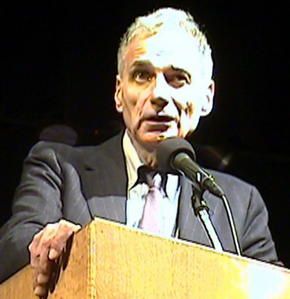


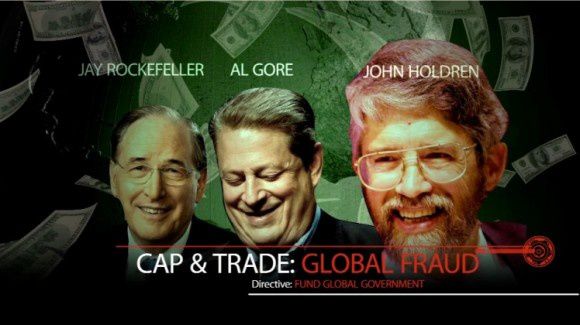



![Géopolitique : Union transatlantique, la grande menace, par Alain De Benoist [tribune libre] Géopolitique : Union transatlantique, la grande menace, par Alain De Benoist [tribune libre]](http://www.breizh-info.com/wp-content/uploads/2014/06/tafta.jpg)


